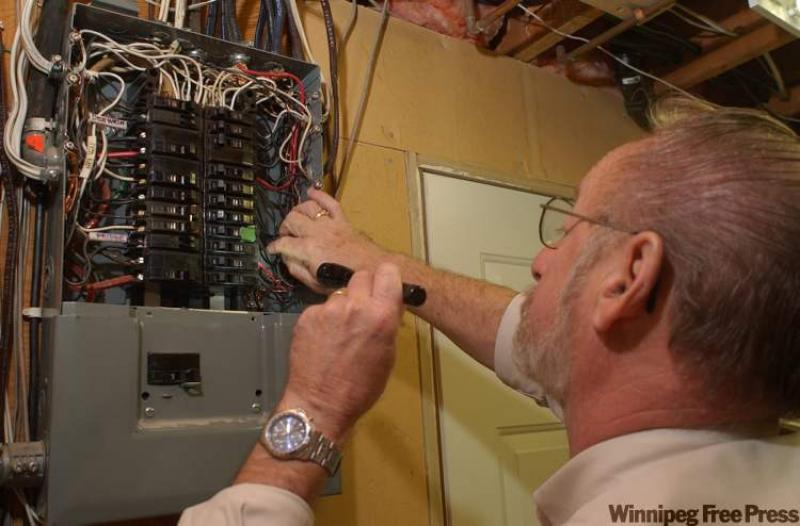Chances are, unless you bought directly from the builder, your house may have had multiple owners already. And let's face it -- you are not going to be its last owner. Your home is going to outlast you -- and you should do everything you can to make sure it does.
If you build or renovate keeping that idea in mind, you are going to make better choices about materials you use, and better decisions about what's a priority. Better materials means it will last longer -- and that's less waste going to a landfill. Better priorities mean you'll spend money on what lasts, instead of what's a passing trend.
In 100 years from now, you don't want some future owner saying, 'Way back in 2010 they upgraded the interior design, but the wiring and plumbing is still from the 19th century.' (That's if it hasn't burned to the ground because of that old wiring.)
Think of it this way: Even though you own your home, you are really just taking care of it for the next 30 to 40 years, until the next 'caretaker' takes over. The idea is to pass the house in the same condition -- or better -- than when you signed the deed.
I like the term 'caretaker' because that's what a house really needs so it will last for centuries -- an owner who maintains the house and who carries out long-term upgrades that add to the house's over-all health.
Upgrades like on the main systems in a home -- the plumbing, the HVAC, the wiring, the insulation. And by 'long-term' I mean longer than your current stay as 'caretaker'.
Some people say, Why bother? Let the next owner deal with it. And they overlook these upgrades in favour of strictly cosmetic fixes. Let's face it -- the upgrades I recommend aren't what seems to sell a home in the real estate market. A lot of buyers are still looking at the trendy surfaces -- a big mistake that usually ends up costing a lot.
I'm all for keeping your home's interior in current fashion, if that's important to you. But if you are going to give an area of your home a facelift, this is exactly the best time to cost-effectively get at all the old plumbing and wiring behind that area you plan on sprucing up. Updating these old hidden systems before there is a problem is also called 'Spending Smart Money.'
Here's an example of smart money in action -- in a renovation of an upper floor of a 1890s era town home. The lath and plaster walls and ceiling were cracked and after 100 years of patching and untold layers of paint, the 'current caretaker' has decided to tear it all out and replace it with new drywall. The smart money, in this case, is to also upgrade the insulation in the walls when they are open. The insulation material of a century ago was just newspaper stuffed in the wall cavities -- if that. Smart money takes the opportunity and makes those long-lasting improvements that are not immediately obvious but add so much to the overall condition of the structure as well as other benefits, such as improved energy efficiency.
You have to anticipate. If you know you have a 120-year-old house, think about what else could be overdue for an upgrade -- beyond improving the surfaces. Dedicate 20 to 30 per cent of your allotted budget for anticipated upgrades still to-be-determined. I'll bet the townhome in the above example might also still have some knob and tube wiring in the walls -- there'd be no better time to remove that potential fire safety issue. The key is to have some budget set aside for these anticipated upgrades. Then, if you are lucky and discover a previous owner has already updated the wiring, you have extra budget for the interior design part of the reno.
Let's say you have a 1900s era home and you want to renovate the bathroom. It probably has lead sewage pipes -- which are typical for the time period. Replacing these old pipes is money well spent. They may be still functioning today, but a century of corrosion means their time is almost up. In fact, you'd be crazy not to -- a broken sewage pipe is not a pretty sight.
But it may be fair to assume this is the third or forth bathroom renovation on this house -- since that's one of the first rooms to be redone in a house. The lead pipes might have been removed by a previous owner -- that would be nice. But when you plan your renovation you should still anticipate that previous owners were just concerned with modernizing the fixtures and tiles, and not the waste lines in their plumbing.
The trouble with spending smart money is that you never really know if it was worth it, in the end, because it will outlast you. But if you don't spend it, and that old pipe fails, then your newly renovated bathroom has to be torn out to access that corroded pipe. That's when you begin to understand why it's called 'smart money.'
-- Canwest News Service
Catch Mike in his brand-new series, Holmes Inspection, airing Thursdays at 8 ET/PT on HGTV. For more information, visit www.hgtv.ca.
Do you have a question about home renovations? E-mail mikemakeitright.ca.




